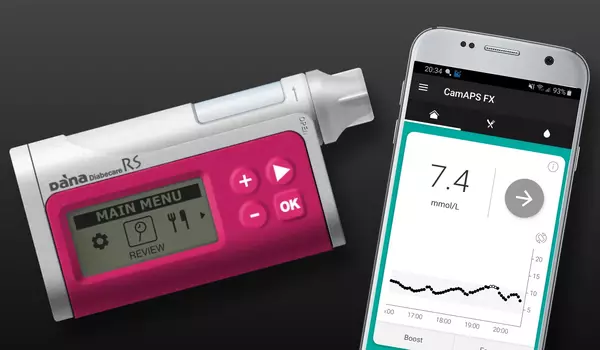According to a new study, an artificial pancreas developed at the University of Virginia Center for Diabetes Technology improves blood sugar control in children aged 2 to 6 with type 1 diabetes. The clinical study’s details and findings were recently published in the New England Journal of Medicine.
There are numerous advantages to using an artificial pancreas system in young children. It provides more precise and stable blood sugar control, lowering the risk of both short-term and long-term diabetes complications. It also reduces the burden on parents or caregivers by eliminating the need for continuous monitoring and manual insulin administration.
Participants in the trial who used the artificial pancreas spent about three hours more per day in their target blood sugar range than participants in the control group who continued to use the methods they were already using to manage their blood sugar.
After the resounding success of Control-IQ technology in people ages 6 and up, it is very rewarding to see our youngest patients, and often the most challenging patients to help, benefit as well.
Marc D. Breton
Tandem Diabetes Care’s Control-IQ system is a diabetes management device that automatically monitors and regulates blood glucose. The artificial pancreas has an insulin pump that adjusts the insulin dose as needed based on advanced control algorithms based on the person’s glucose monitoring data.
Based on findings from two earlier studies, the system has previously been approved by the U.S. Food and Drug Administration for people ages 6 and older with type 1 diabetes.
“After the resounding success of Control-IQ technology in people ages 6 and up, it is very rewarding to see our youngest patients, and often the most challenging patients to help, benefit as well,” said Marc D. Breton, Ph.D., a UVA School of Medicine researcher who served as the trial’s principal investigator and was recently honored as UVA’s 2022 Innovator of the Year. “With these results, we have now accumulated years of clinical validation of this system across all age groups and look forward to seeing this life-changing technology made available to the broadest possible population.”

Used During Everyday Life
The study enrolled 102 children between the ages of 2 and 6 at three different sites in the United States (UVA, Stanford University, and the University of Colorado) and randomly assigned 68 of them to use the artificial pancreas system for 13 weeks, while the remaining 34 were assigned to the control group. Throughout the study, all participants followed their normal daily routines.
On average, participants using the artificial pancreas spent about 12 percentage points more time within their target blood glucose range than participants in the control group overall, and 18 percentage points more time during the overnight hours of 10 p.m. to 6 a.m. Severe, unchecked hypoglycemia (very low blood glucose levels) can lead to seizures, coma, or even death if blood glucose levels are not controlled at night.
Overall, the researchers found, participants were able to use the artificial pancreas safely. There were two cases of severe hypoglycemia in the artificial pancreas group, compared with one in the control group. There was also one case of diabetic ketoacidosis in the artificial pancreas group, caused by a failure of the thin plastic tube that connects the insulin pump to the patient’s body.
Notably, the majority of the study-related visits were virtual, including 80% of the training sessions on the artificial pancreas and more than 90% of the total visits. Achieving the reported results under these conditions demonstrates the technology’s ease of use and its potential for areas with limited access to endocrinologists.
“At the end of the day, this technology significantly improved glycemia and ensured the safety of our youngest patients, but perhaps more importantly, it alleviated these families’ constant anxiety about glucose levels, particularly at night.” Breton stated. “It’s incredibly rewarding for us to hear about these families’ experiences and how they manage to incorporate these new tools into their lives, providing some relief from the challenges they face.”















